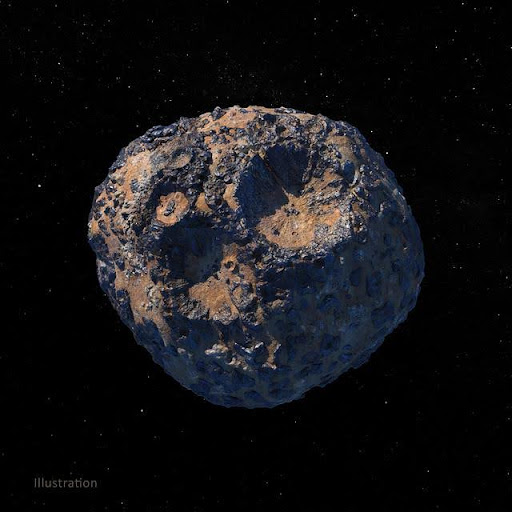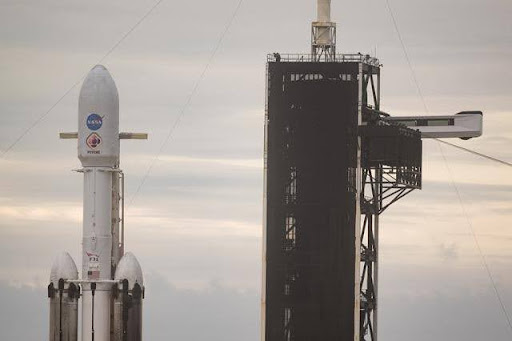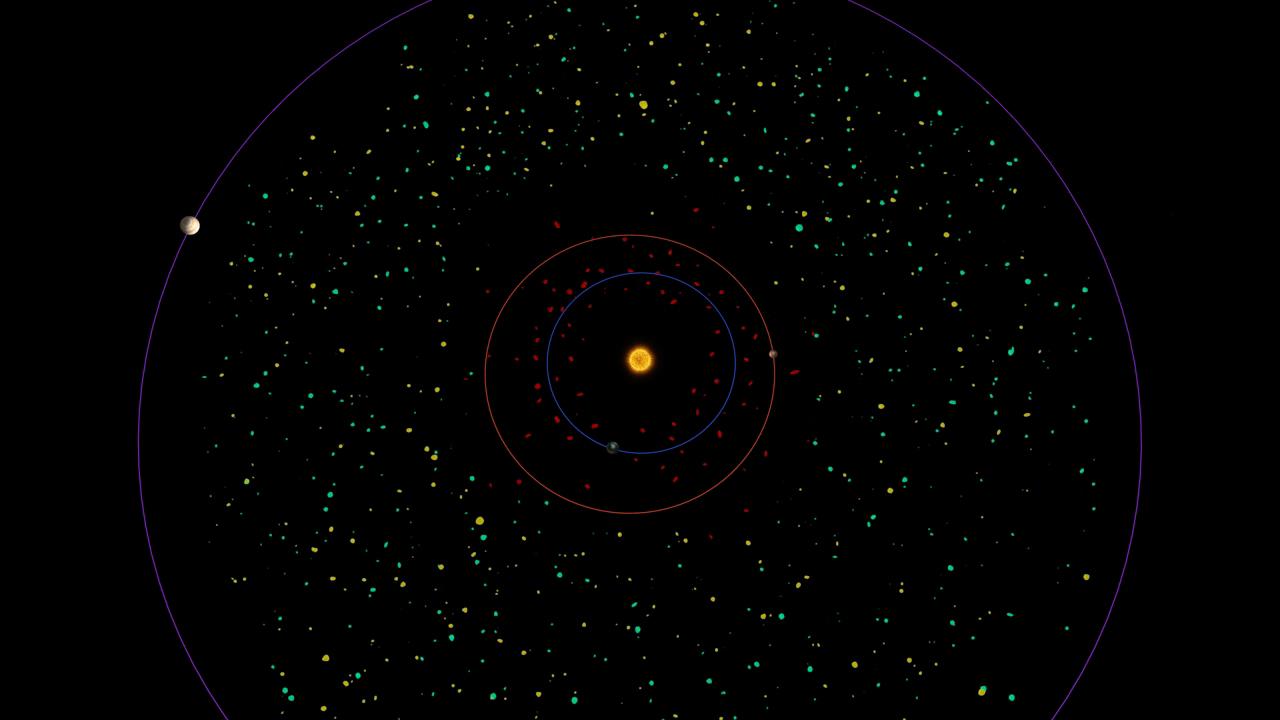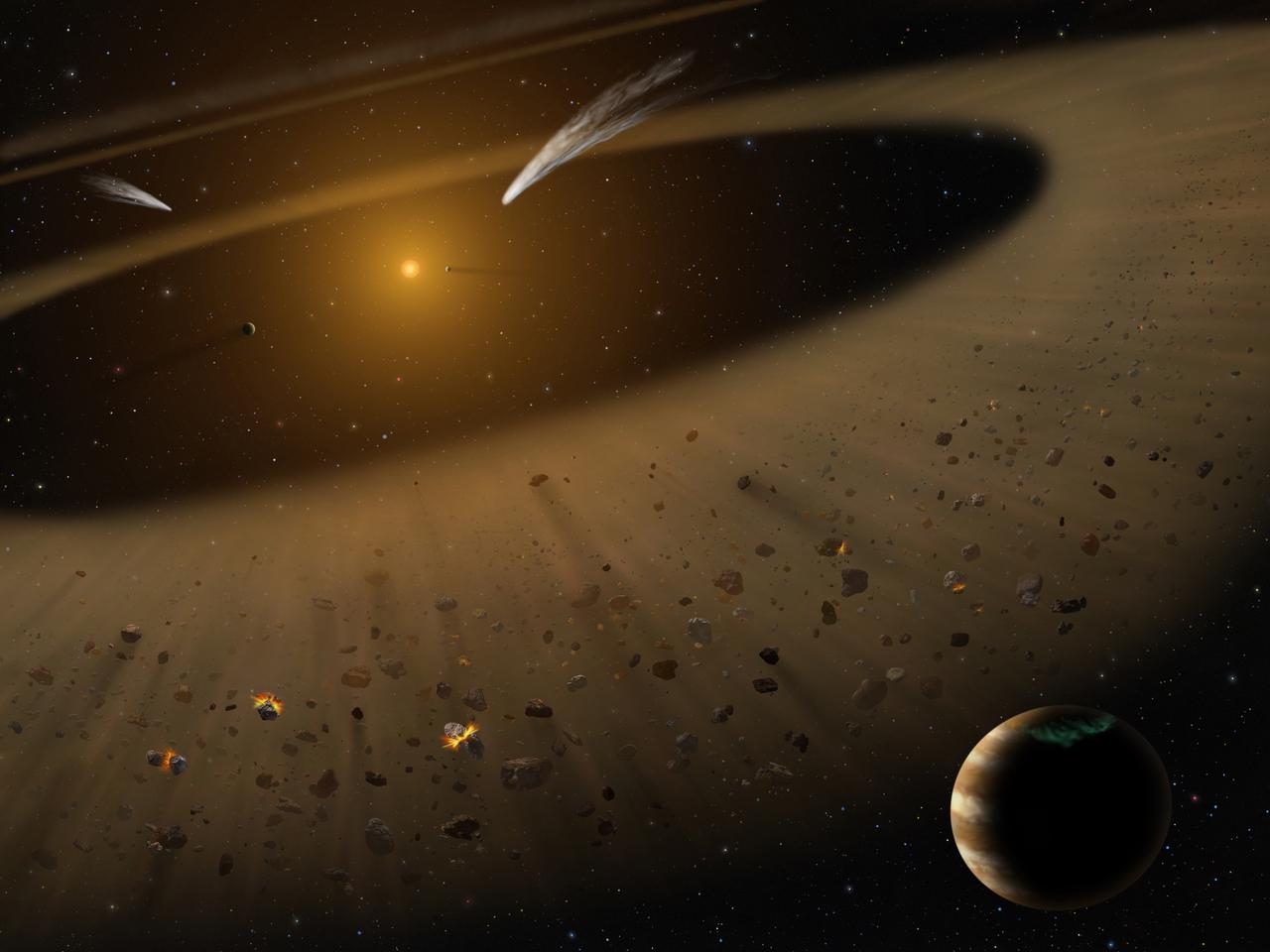Asteroids have long been seen as stepping stones to deeper space exploration, but a select few stand out as particularly valuable. These asteroids contain a wealth of metals that could provide resources for future missions or even revolutionize industries on Earth.
Among them, 16 Psyche (6178) 1986 DA and (7474) 1992 TC are some of the most promising exploration targets. Let’s start with the first one, 16 Psyche.
16 Psyche

Asteroid Psyche is one of the most unique and mysterious objects in the asteroid belt – a massive, metal-rich body orbiting between Mars and Jupiter. Originally thought to be almost entirely composed of metal, recent observations suggest it is a mix of rock and metal, with metal making up anywhere from 30% to 60% of its volume.
Scientists speculate that 16 Psyche may be the exposed core of a differentiated body – a planetesimal whose outer layers were stripped away by ancient collisions. If this is the case, it could offer a unique glimpse into the cores of terrestrial planets, including Earth, revealing how metal-rich planetary cores formed in the solar nebula.
Size and Composition
This metallic asteroid is enormous by asteroid standards, measuring 173 miles (280 km) across at its widest point, with a surface area of 64,000 square miles (165,800 square kilometers). Its irregular, potato-like shape suggests that it has undergone significant impacts throughout its history.
Observations indicate that its surface is highly varied, with regions of different metal content and crater-like depressions that could reveal a history of ancient collisions. These features make it a fascinating target for exploration, as they could provide insights into how metal-rich asteroids evolve over time.
The asteroid’s thermal inertia, a measure of how quickly it absorbs and releases heat, has been key in determining its composition. Data gathered from radar observations and infrared studies suggest a mix of iron, nickel, and silicate materials, similar to those found in Earth’s mantle and crust. The asteroid’s density and reflectivity indicate that some areas may be more metallic, while others contain a higher concentration of rocky material.
Orbit and Rotation
16 Psyche orbits the Sun at a distance ranging from 235 million to 309 million miles (378 to 497 million kilometers), taking five Earth years to complete one orbit. However, a day on Psyche is relatively short, just over four hours long, as it rapidly spins on its axis.
Its position in the asteroid belt means it is constantly bombarded by smaller space debris, potentially altering its surface over time. Understanding its rotation and orbit will help future missions navigate and land safely, should mining efforts become feasible.
The Psyche Mission: NASA’s Quest for Answers

NASA launched the Psyche spacecraft on October 13, 2023, aboard a Falcon Heavy rocket to study this remarkable asteroid up close. The spacecraft will arrive in 2029 and spend about two years mapping and analyzing Psyche’s surface, aiming to answer key questions about its composition, structure, and history. The mission is part of NASA’s Discovery Program, which focuses on cost-effective planetary science missions.
Once in orbit, Psyche’s gravity field will be measured using radio signals, allowing scientists to determine its internal structure. The mission will also test advanced instruments, including:
- Multispectral Imager – This instrument consists of two identical cameras equipped with filters and telescopic lenses. It will capture high-resolution images of the asteroid’s surface, helping scientists distinguish between metal and rock, identify surface features, and create a detailed geological map.
- Gamma-Ray and Neutron Spectrometer – This device will analyze the chemical composition of Psyche by detecting gamma rays and neutrons emitted by the surface when hit by cosmic radiation. This will provide data on the abundance of iron, nickel, and other elements present.
- Magnetometer – Psyche is expected to have no active magnetic field, but if remnants of an ancient field are detected, it could confirm that Psyche was once part of a larger body with a molten metal core.
- Deep Space Optical Communications (DSOC) – A revolutionary technology demonstration for high-bandwidth laser communications beyond Earth’s orbit. This system could pave the way for future deep-space missions that rely on high-speed data transfer.
The spacecraft will use solar-electric propulsion, meaning it will be powered by solar panels and use ion thrusters to navigate. This energy-efficient propulsion system allows for a longer and more flexible mission, which makes it ideal for deep-space exploration. You can check out NASA’s Psyche spacecraft in real time with this interactive simulation: NASA Psyche Tracker – see its current location and follow its journey as it travels through the Solar System.
Mining Potential

Many sensational headlines have claimed that 16 Psyche contains enough metals to make everyone on Earth a billionaire, and this is really exaggerating the truth. While it is undeniably metal-rich, the feasibility of mining it remains a significant challenge.
Psyche is located deep in the asteroid belt, requiring years of travel, and any mining operation would need to overcome extreme logistical hurdles, including:
- Low gravity – Extracting and transporting materials from an asteroid with weak gravity would require specialized techniques, such as magnetic separation or electrostatic beneficiation.
- Distance from Earth – Mining missions would need autonomous robotic systems capable of operating independently for years without human intervention.
- Unknown surface conditions – The lack of direct data means that Psyche’s surface could present unexpected challenges, such as loose regolith or buried metallic deposits that are difficult to access.
However, the asteroid remains valuable from a scientific and technological standpoint. Studying it will improve our understanding of how metals distribute in space, refine mining techniques for future asteroid missions, and possibly pave the way for resource extraction on nearer asteroids.
If successful, the Psyche mission could serve as a test case for future asteroid mining efforts, providing key insights into the challenges and benefits of extracting resources from metal-rich bodies. It will also help determine if mining efforts should be directed at more accessible near-Earth asteroids instead.
(6178) 1986 DA

1986 DA is a near-Earth asteroid (NEA) classified as an Amor-type asteroid. Unlike 16 Psyche, which resides in the asteroid belt, 1986 DA’s orbit brings it much closer to Earth. This makes it a far more practical target for mining missions in the future.
Composition and Structure
Radar observations of 1986 DA indicate that it has a highly reflective surface, consistent with a metallic composition. Scientists believe this asteroid is a fragment of a differentiated body, a much larger celestial object that melted, separated into layers, and was later shattered by a catastrophic collision.
Spectral analysis suggests that 1986 DA consists of approximately 85% metal and 15% pyroxene, with an iron-nickel composition similar to certain types of meteorites found on Earth. Some estimates suggest that this asteroid contains more metal than Earth’s entire global reserves of iron, nickel, and precious platinum group metals, but nothing has been proved yet.
Orbit and Rotation
1986 DA orbits the Sun every 4.71 years, traveling between 1.17 AU and 4.46 AU from the Sun. It is about 2.3 kilometers in diameter, roughly the size of Mount Everest. The asteroid completes a full rotation every 3.5 hours.
It has two predicted close approaches to Earth:
- April 7, 2038 – 29.6 million km from Earth
- April 6, 2076 – 29.0 million km from Earth
Although its orbit brings it relatively close to our planet, 1986 DA is not considered a hazardous object since its trajectory does not pose any imminent risk.
Mining Potential
Given its metal-rich composition and accessibility, 1986 DA is one of the most promising candidates for asteroid mining. It may be a key target for companies like Karman+ and AstroForge, which are developing plans for future asteroid resource extraction. If successfully mined, the materials found in 1986 DA could be used in space construction, fuel production, and even for manufacturing valuable metals for Earth-based industries.
(7474) 1992 TC
1992 TC is another Amor-type near-Earth asteroid, meaning that its orbit crosses Mars but not Earth. It is classified as a Large Near-Earth Object (NEO) due to its size and orbit.
Composition and Structure
Unlike the 1986 DA, which has been identified as a metal-rich asteroid, the composition of 1992 TC remains less certain. However, given its classification and orbital characteristics, it is believed to contain significant metallic components. Its absolute magnitude of 18 suggests that it is relatively bright, an indicator of a reflective surface, possibly due to metallic content.
Orbit and Rotation
1992 TC has a semi-major axis of 1.57 AU, an eccentricity of 0.29, and an orbital inclination of 7.08 degrees. Its perihelion (closest approach to the Sun) is 1.11 AU, while its aphelion (farthest point from the Sun) is 2.02 AU.
Mining Potential
Although 1992 TC has not been studied in as much detail as 1986 DA, its proximity to Earth and potential metal content make it a compelling target for future exploration. As technology advances and asteroid mining becomes more feasible, 1992 TC could potentially be one of the first asteroids mined for its metals.
Why Are These Asteroids Important for Mining?

Asteroids like 16 Psyche, 1986 DA, and 1992 TC hold immense potential for the future of space mining. Their potentially high metal content could provide a sustainable resource base for space industries, reducing the need to launch heavy materials from Earth. With advances in in-situ resource utilization (ISRU), these asteroids could supply essential materials for building space habitats, manufacturing spacecraft components, and even fueling long-term missions to Mars and beyond.
While 16 Psyche is a long-term target due to its distance, near-Earth asteroids like 1986 DA and 1992 TC could be the first practical mining sites. Their relatively close orbits make them ideal testing grounds for extraction technologies, allowing researchers to refine techniques before attempting operations on more distant bodies.
If successful, asteroid mining could shift the way we think about resources, turning space into a self-sustaining environment where materials are gathered and used beyond Earth, rather than being transported from it.